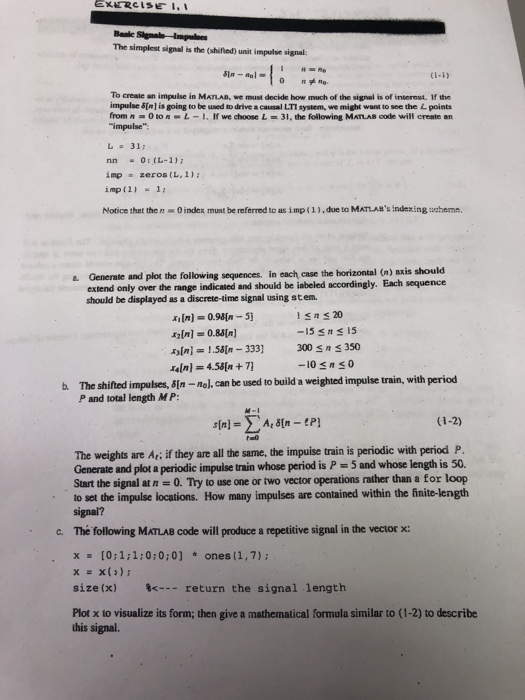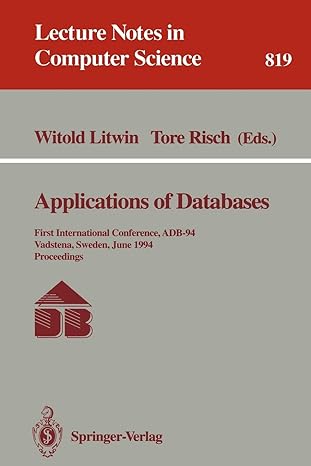Solve using MATHLAB
Show the instructions used in MATHLAB
The simplest signal is the (shifted) unit impulse signal To creale an impulse in MALAD, we must decide how much of the signal is of interest. If the impulse SIn] is going to be used to drive a causal LTI sysiem, we might want to see the L points from n=010 n-L-l. If we choose L=31, te following MATLAB code will create an "impulse" 31; nn O:(L-1) imp zeros (L. 1) imp(1) 11 Notice that the n = 0 index must be referred to as ing 1 ) . due to MATLAB's indexing ncheme. Generate and plot the following sequences. in each case the horizontal (n) axis should extend only over the range indicated and should be iabeled accordingly. Each sequence should be displayed as a discrete-time signal using stem a. [n] = 098 n-5] oin)-1.58n-333 300 350 b. The shifted impulses, 8In -nel. can be used to build a weighted impulse train, with P and total length MP: (1-2) The weights are At; if they are all the same, the impuise train is periodie with period P. Generate and plot a periodic impulse train whose period is P-5 and whose length is 50. Start the signal at n-O. Try to use one or two vector operations rather than a for loop to set the impulse locations. How many impulses are contained within the inite-length signal? The following MATLAB code will produce a repetitive signal in the vector x: x 10:1;1:0:0:0] ones (1,7) x = x(3); size (x) return the signal length c. Plot x to visualize its form; then give a mathematical formula similar to (1-2) to describe this signal. The simplest signal is the (shifted) unit impulse signal To creale an impulse in MALAD, we must decide how much of the signal is of interest. If the impulse SIn] is going to be used to drive a causal LTI sysiem, we might want to see the L points from n=010 n-L-l. If we choose L=31, te following MATLAB code will create an "impulse" 31; nn O:(L-1) imp zeros (L. 1) imp(1) 11 Notice that the n = 0 index must be referred to as ing 1 ) . due to MATLAB's indexing ncheme. Generate and plot the following sequences. in each case the horizontal (n) axis should extend only over the range indicated and should be iabeled accordingly. Each sequence should be displayed as a discrete-time signal using stem a. [n] = 098 n-5] oin)-1.58n-333 300 350 b. The shifted impulses, 8In -nel. can be used to build a weighted impulse train, with P and total length MP: (1-2) The weights are At; if they are all the same, the impuise train is periodie with period P. Generate and plot a periodic impulse train whose period is P-5 and whose length is 50. Start the signal at n-O. Try to use one or two vector operations rather than a for loop to set the impulse locations. How many impulses are contained within the inite-length signal? The following MATLAB code will produce a repetitive signal in the vector x: x 10:1;1:0:0:0] ones (1,7) x = x(3); size (x) return the signal length c. Plot x to visualize its form; then give a mathematical formula similar to (1-2) to describe this signal







